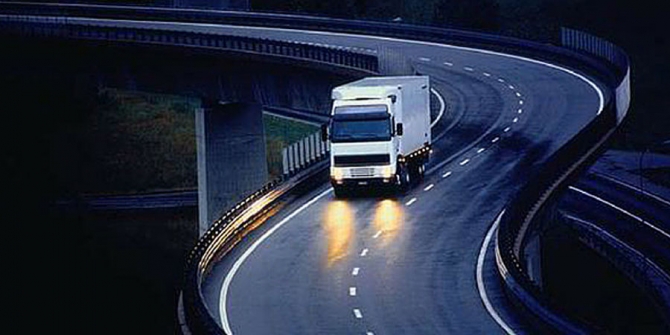The UK haulage industry is under huge pressure to recruit new, younger staff, to keep the industry from grinding - literally - to a halt.
See the The HGV drivers guide to lone working safety infographic here.
But - after chaotic scenes in Calais highlighted the daily risks HGV drivers can face - it may be an uphill battle for companies desperately trying to recruit the 45,000 drivers that are urgently needed to stabilise a dwindling and ever-ageing workforce.
The current situation in Calais and across Europe with the migration of refugees is a multi-faceted and complex one, with issues that run deep. This article isn't intended to be a political opinion on the situation, but a very one-sided look at the issues facing drivers and hauliers - and the ways in which LONEALERT is trying to support them in their work.
With statistics showing that 13,000 of the UK’s HGV drivers are 65 or over - 47% of them over the age of 50 - time is ticking for the UK haulage industry to find new blood as it faces the unprecedented shortage of lorry drivers.
More than 1.6bn tonnes of goods are moved by the road every year but, with the cost of getting a licence putting off potential young drivers, the number of HGV licences has dropped by more than 32,000 in the past five years.
The pressures facing the industry - and indeed individual drivers - have been well documented of late, with the importance of protecting those who work in the industry thrust to the forefront of people’s minds.
Aside from the ageing population of drivers, the risks that each of them face in the line of duty on the roads has been catapulted into the spotlight with daily coverage of the shocking scenes from Calais.
British drivers have told of escalating violence by migrants desperate to reach Britain on the roads around Calais. They say they are facing unprecedented levels of aggression and running a daily gauntlet of attacks involving knives, hammers and even guns, whilst there have been reports of migrants dropping lumps of concrete from motorway bridges and threatening attacks unless drivers let them inside their cabs.
Whilst worrying personal accounts from drivers whose livelihoods are being threatened in Calais regularly fill newspaper column inches, tales of the risks drivers face much closer to home are also sadly not uncommon.
The majority of HGV drivers work alone, and often at night, making them vulnerable to attacks. Figures show that 63% of attacks on drivers are the result of a vehicle or load being targeted - with an average of 1 in 6 HGV drivers reporting they have been attacked in the past five years - 30% of them more than once.
LONEALERT has long worked with the haulage industry to give drivers protection at work - and Sales & Marketing Manager Mathew Colley said it was vital that companies made the safety of workers a priority to encourage more people to join the industry.
Mathew added: “ The risks to HGV drivers is vast and varied. From extreme weather to dangerous loads, falling asleep at the wheel, overnight stops in risky locations alone, heavy machinery and even vehicle fumes, drivers face a number of potential risks whilst going about their daily roles.
“The situation in Calais has highlighted the risks drivers face but it is sadly not uncommon for attacks to happen much closer to home - whilst the ageing population of drivers brings with it other potential situations such as medical emergencies.
“As the industry faces unprecedented pressure to recruit new workers, it is more vital than ever before that employers prioritise the safety of drivers so more people can at least feel confident about their safety in the profession.
“We have a number of solutions at LONEALERT that are perfect for the haulage industry, including Man Down Plus and Tags & Beacons. We are proud that we are playing our part to keep drivers safe and keep this incredibly important industry moving.”
Article Code: BLA201601

